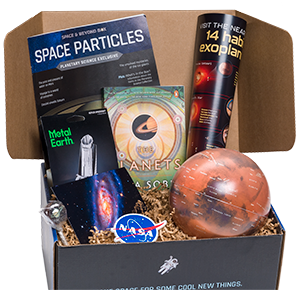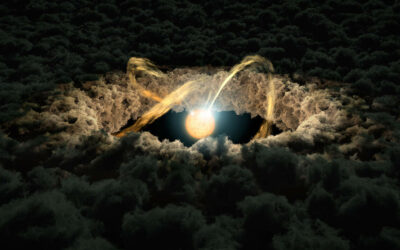The Space & Beyond Blog
5 Bizarre Jupiter Facts
The “King of Planets” is a strange world, and here are just a few of the reasons why Jupiter is so bizarre.
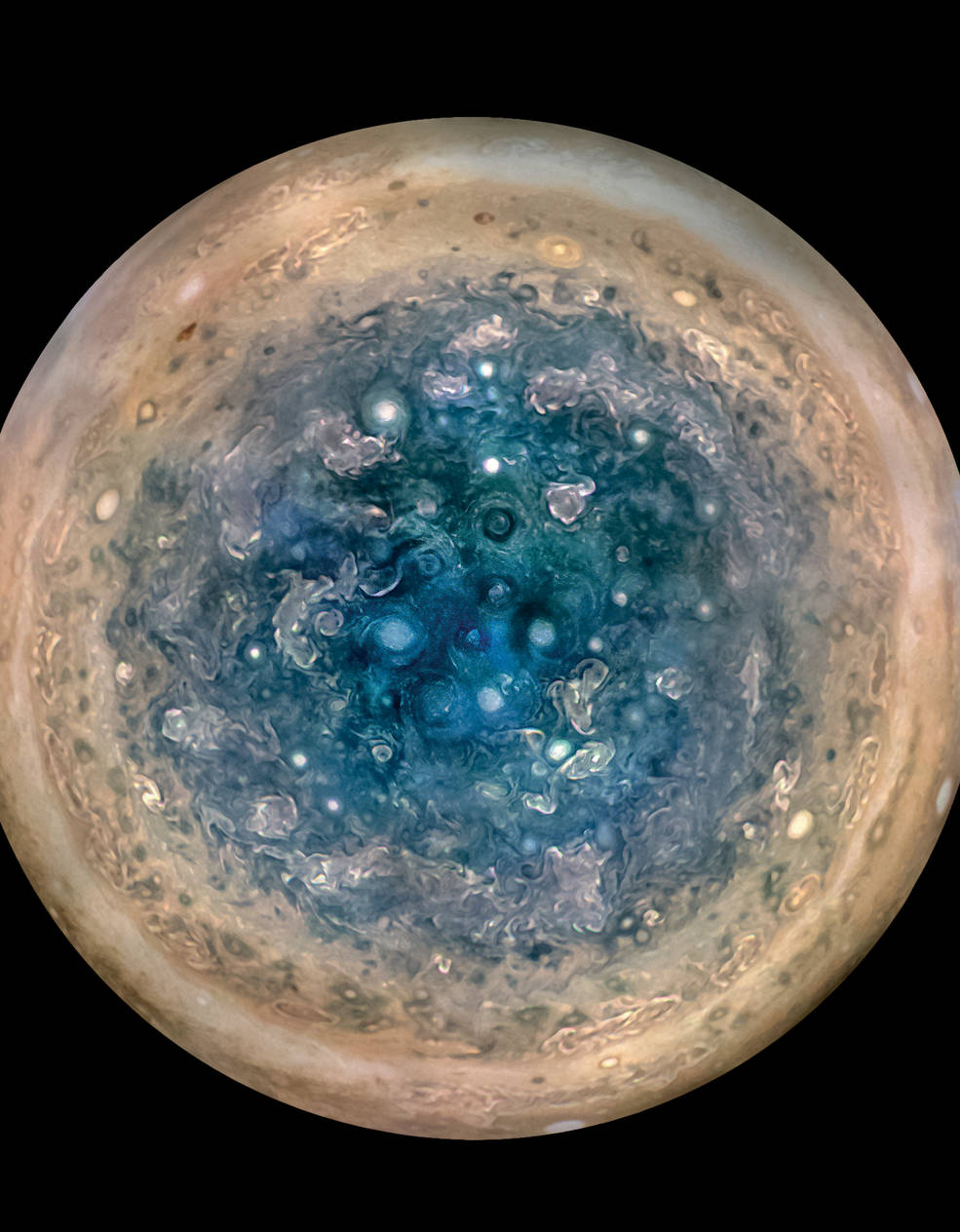
This image shows Jupiter’s south pole, as seen by NASA’s Juno spacecraft from an altitude of 32,000 miles (52,000 kilometers). The oval features are cyclones, up to 600 miles (1,000 kilometers) in diameter. Multiple images taken with the JunoCam instrument on three separate orbits were combined to show all areas in daylight, enhanced color, and stereographic projection. SOURCE: NASA/JPL-Caltech/SwRI/MSSS/Betsy Asher Hall/Gervasio Robles
Here are just five Jupiter facts that dive into some of the most fascinating tidbits about our solar system’s largest world, Jupiter.
Jupiter — the so-called “King of Planets” — is one of the most recognizable sights in the night sky. Although it doesn’t quite shine as brightly as nearby Venus, Jupiter often rivals Mars as the second-brightest celestial object besides the Moon.
1. Jupiter does not have a traditional “surface”
Gas giants like Jupiter do not have solid surfaces. So, if you dropped a penny from the cloud tops, it would never land with a “clink.” These bodies are mostly composed of hydrogen at temperatures above the “critical point” for hydrogen, meaning there is no sharp boundary between solid, liquid, and gas regions.
But gas giants do have layers. For example, if you could somehow endure the high temperatures, pressures, and radiation levels and survive a dive into Jupiter, you would first swim through a stormy atmosphere of hydrogen. You would pass through layers of ammonia clouds, sulfide clouds, and then water clouds. You would probably even begin to float when the density of the gas around you matched that of your body. And if you could weigh yourself down, you could keep sinking and enter a thick layer of metallic hydrogen, where electrons and protons move separately from one another. The temperature would get hotter and hotter as you kept diving — up to about 20,000 kelvins (35,000 degrees Fahrenheit).
On Earth, sprites and elves appear red, thanks to the abundance of nitrogen in our atmosphere. But on Jupiter, where the atmosphere is dominated by hydrogen, these phenomena appear blue or possibly pink. SOURCE: NASA/JPL-Caltech/SwRI
2. Sprites and Elves frolic in Jupiter’s clouds
Stunning, evanescent events called sprites and elves have been observed from NASA’s Juno spacecraft in the stormy clouds of Jupiter — marking the first time they’ve been observed on another planet.
Both sprites (which stands for Stratospheric/mesospheric Perturbations Resulting from Intense Thunderstorm Electrification) and elves (Emission of Light and Very Low Frequency perturbations due to Electromagnetic Pulse Sources) are a type of transient luminous event, or TLE. These strange phenomena, which only last milliseconds, are occasionally seen above thunderstorms.
Sprites typically have a round, blobby center that sprouts tendrils of light reaching upward or downward. Sprites occur when lightning bolts funnel positive charge from cloud to ground, leaving the cloud negatively charged. This, in turn, triggers activity in the atmosphere above the storm: a sprite.
Elves, on the other hand, look more like expanding doughnuts or rings. They occur around 62 miles (100 km) above the ground, reaching diameters up to 300 miles (480 km) wide. Elves form when electromagnetic pulses released during a thunderstorm slam into the ionosphere.
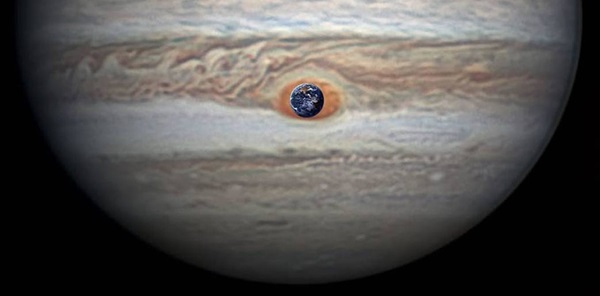
Measuring in at 10,159 miles (16,350 kilometers) in width (as of April 3, 2017) Jupiter’s Great Red Spot is 1.3 times as wide as Earth. SOURCE: NASA/JPL-Caltech/SwRI/MSSS/Christopher Go
3. The Great Red Spot is a centuries-old storm
The Great Red Spot, a storm larger than Earth and powerful enough to tear apart smaller storms that get drawn into it, is one of the most recognizable features in Jupiter’s atmosphere. This counterclockwise-moving storm, an anticyclone, boasts wind speeds as high as 300 miles (480 km) per hour.
Much about the Great Red Spot is still unknown, including exactly when and how it formed, what gives it its striking red color and why it has persisted for so much longer than other storms that have been observed in the atmosphere of Jupiter. However, astronomers think that its position in latitude, consistently observed to be 22 degrees south of Jupiter’s equator, is connected to the prominent cloud bands in Jupiter’s atmosphere.
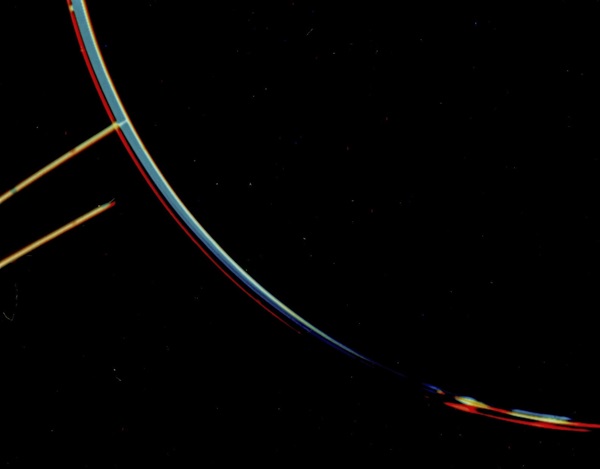
Voyager 1 discovered Jupiter’s faint, dusty rings during its flyby, and they posed for this Voyager 2 portrait once the probe passed into the planet’s shadow. The curved rings appear orange-red; Jupiter’s multicolored limb comes from the long exposure through two filters. SOURCE: NASA/JPL
4, Jupiter has faint rings
Discovered in 1979 when the Voyager 1 and Voyager 2 spacecraft flew by Jupiter, the King of Planet’s ring system may be faint, but it’s definitely there.
Voyager 1 discovered Jupiter’s faint, dusty rings during its flyby, and they posed for a Voyager 2 portrait once the probe passed into the planet’s shadow. In the image above, the curved rings appear orange-red; Jupiter’s multicolored limb comes from the long exposure through two filters. The ring of dust extends some 80,000 miles (129,000 km) from Jupiter’s center.
Enjoying our blog?
Check out the Space & Beyond Box: our space-themed subscription box!
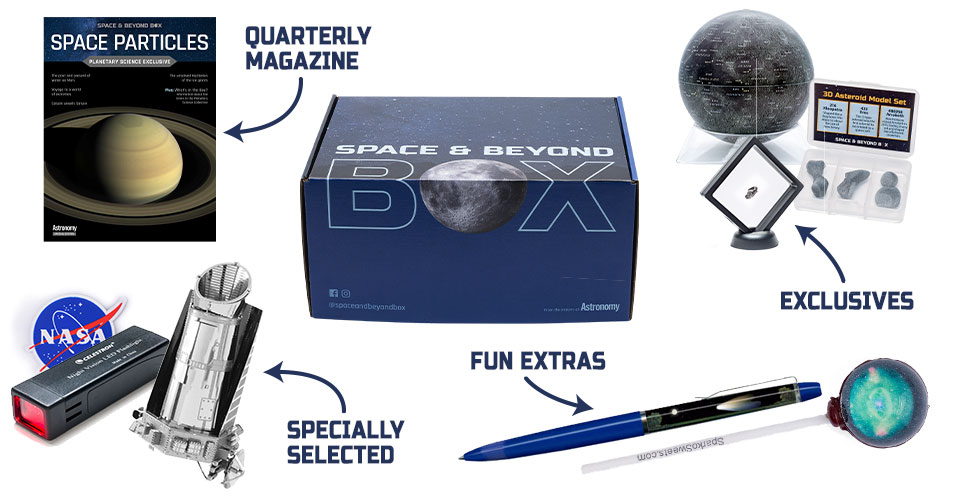
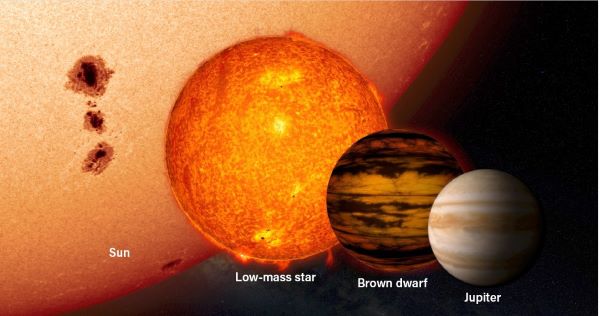
This illustration shows that the average brown dwarf is much smaller than the Sun and low mass stars and only slightly larger than Jupiter. SOURCE: NASA’s Goddard Space Flight Center
5. Jupiter is more massive than all other planets combined
Jupiter is the most massive planet in our solar system, weighing more than twice as much as all the other planets combined.
The Sun weighs about 1,048 times more than Jupiter. Or, viewed another way, Jupiter is less than 0.1 percent the Sun’s mass. But Jupiter still falls far short of the heft needed to ignite nuclear fusion and become a star.
CONNECT WITH US ON INSTAGRAM
CHECK OUT OUR LATEST BLOGS
Tour the inner solar system
Take a deep dive into the rocky planets that make up our local neighborhood.
